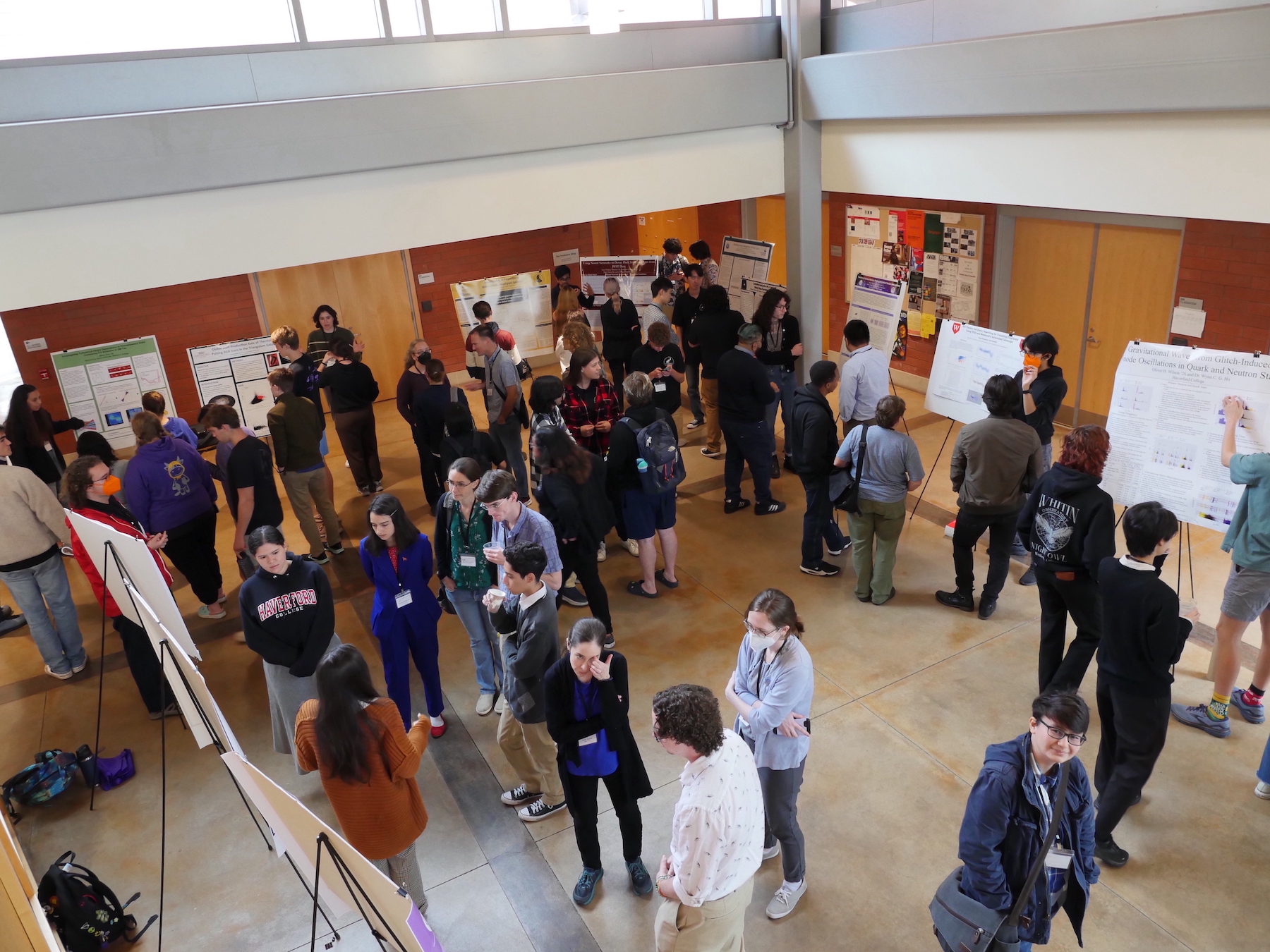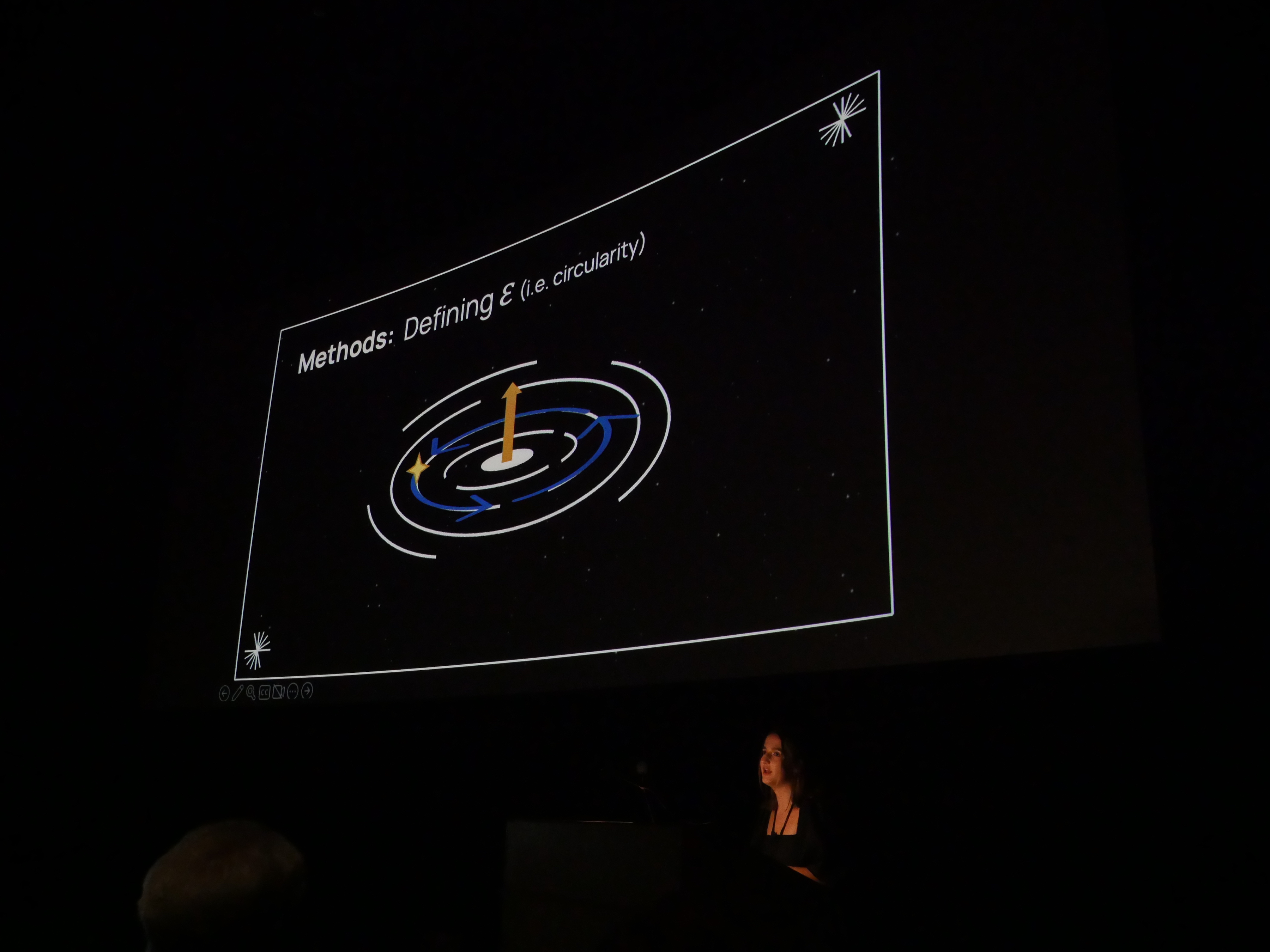
c/o Rose Chen, Assistant News Editor
The University hosted this year’s Keck Northeast Astronomy Consortium (KNAC) Fall Symposium, which brings together faculty and students from eight liberal arts colleges and universities in the Northeast to present astronomy student research and foster interaction between campuses. Astronomy and physics departments from Colgate University, Haverford College, Middlebury College, Swarthmore College, Vassar College, Wellesley College, and Williams College joined Wesleyan on Saturday, Oct. 7, 2023 for a series of talks and poster presentations. Guests arrived Friday afternoon for dinner and a gathering at Van Vleck Observatory (VVO), and the symposium was hosted the next day at the Jeanine Basinger Center for Film Studies.
“We’re at small but vibrant institutions,” Professor of Astronomy Seth Redfield said. “It makes a big difference seeing the larger landscape of astronomers at all these small institutions.”
While the astronomy department is among the smallest departments at Wesleyan, events such as the KNAC Symposium allow students across the consortium to collaborate, share research, and learn about the summer research opportunities that KNAC sponsors. The symposium also allows prospective astronomy majors to explore the range of possibilities within the department. Five Wesleyan students presented in this year’s event: Elias Mansell ’24, Qiushi (Chris) Tian ’24, and Sofia Rinaldi ’25 spoke during talk sessions, while Uday Narayanan ’24 and Max Levin ’25 gave poster presentations. Xingyun Yang ’24, a student at Haverford College, also gave a talk on his research this summer at Wesleyan as a KNAC fellow advised by Assistant Professor of Astronomy Sarah Wellons.
“The research today… spans from asteroids near the earth to the origin of our universe and everything in between,” Redfield said. “I just love that, because we work in the weeds of our particular subject areas, and it’s so refreshing to learn about these other areas. And these are all researchers who are at that interface of student and professional. So a lot of these students next year will be in grad school or at an observatory, working with NASA…doing it for a profession.”
The first session featured Mansell presenting on modeling radial and vertical substructures in debris disks and Tian speaking about monitoring stellar activity with a VVO telescope, while Rinaldi spoke during the third session on the kinematics and morphology of early universe galaxies. Levin gave a poster presentation on visualizing and organizing observation data for VVO’s 24-inch automated telescope, and Narayanan presented a poster on searching for transiting exoplanets using NASA’s Transiting Exoplanet Survey Satellite and Wesleyan’s automated telescope.

c/o Rose Chen, Assistant News Editor
This year’s breakout sessions also included a discussion about preserving dark skies and a talk on graduate school admissions by Assistant Professor of Astronomy at Vassar Ed Buie, who recently received his doctorate in Astronomy and Astrophysics from Arizona State University in 2022.
“I think [KNAC] is most helpful for students, to give them a lower pressure environment to talk about their research,” Buie said. “The earlier you can do that, the better. You get more comfortable doing it…. A big part of grad school applications is just having prior research experience, and [students] are given tons in a wide variety of things.”
Narayanan reiterated the importance of events such as KNAC. Although he has attended previous KNAC symposiums, this year was the first time he had presented his research.
“I think it’s a great experience for undergrad researchers, especially given that the presenters there are also students,” Narayanan wrote in a message to The Argus. “Knowing that they all have similar levels of experience as you alleviates a lot of stress and makes it easier to focus on talking/hearing about exciting astronomy research.”
Redfield emphasized his gratitude towards the Wesleyan astronomy community in helping to organize and run the symposium this year.
“I’m really grateful for that community of students and grad students and postdocs and faculty, all participating together to make this happen,” Redfield said. “I wanted to really thank our staff, our administrative assistant [Stefanie Dinneen]…in making this a reality. She was just a huge help in making this happen.”
Van Vleck Observatory also hosts a number of other public events, including Space Nights on Wednesdays from 8 p.m. to 9 p.m., which begin with a half-hour interactive presentation by a member of the astronomy department, followed by observing through the telescopes when the weather is clear or a planetarium show. In collaboration with Russell Library, VVO is also hosting a solar eclipse viewing on Foss Hill on Saturday, Oct. 14, 2023 from 12:30 p.m. to 2:30 p.m., with the maximum eclipse occurring at 1:30 p.m.. Attendees will have the chance to receive a pair of eclipse glasses, peek through the University’s solar telescopes, and talk about the eclipse with astronomy students in either English or Spanish.
Elias Mansell is an Editor-in-Chief for The Argus.
Rose Chen can be reached at rchen@wesleyan.edu.
Owen Gonzales can be reached at ogonzales@weslyean.edu.
Comments are closed